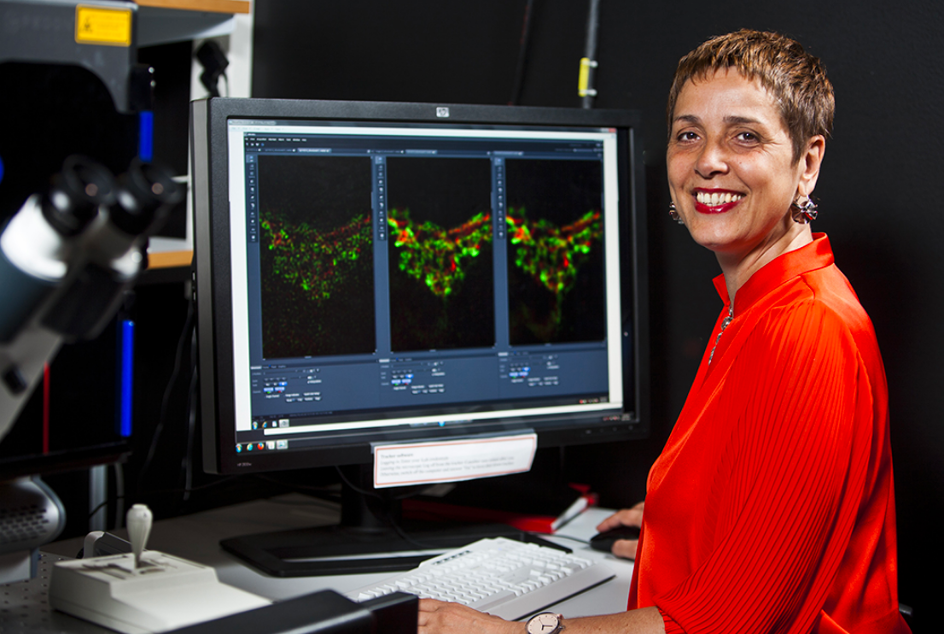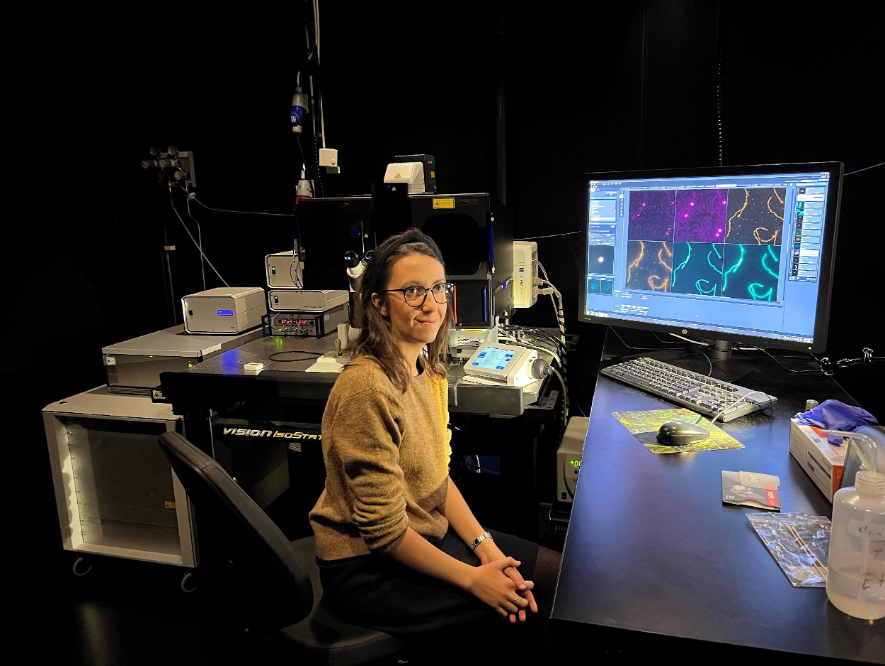
Coming soon… Two new super resolution microscopes available for you at Swedish NMI!
Wondering where you can go to do fast live cell imaging with unprecedented resolution (at 60 nm)? Why not travel to Stockholm or Gothenburg, where extremely qualified staff scientists will help you design and carry out your experiment with the newest generation of Structured Illumination (Lattice SIM) and Single Molecule Localization equipment! With the support of a highly competitive Swedish Research Council grant, our Node in Sweden, National Microscopy Infrastructure (NMI), has purchased two new microscopes and will make this exciting state-of-the-art technology available to open access users via Euro-BioImaging in early 2022.
A generous funding opportunity
Earlier this year, the Swedish Research Council launched an open call in support of “urgent instrument upgrades” for Swedish research infrastructures. As an established infrastructure with support for its operation from this Council, NMI was qualified to apply in this call. Based on the needs of their users, Swedish NMI coordinators Hjalmar Brismar, Director of NMI, KTH, and Julia Rodriguez-Fernandez, Head of the Centre for Cellular imaging, University of Gothenburg, decided to apply for a grant to upgrade their combined SIM and Single Molecule Localization systems, the “workhorses” for super-resolution microscopy in their facilities.
“We have been using the SIM/PALM system at SciLifeLab, part of Swedish NMI, in Stockholm since 2010. We acquired it at the same time as our STED microscope, when we opened as a facility,” says Hjalmar Brismar. “Both sites have a lot of experience with this technology, we have many users, great applications and we’ve been successful with publications.”
But the grant process is extremely competitive. Only established infrastructures can apply. “For us, being part of Euro-BioImaging was also a good argument,” explains Hjalmar Brismar. “The reviewers of the proposal were our peers in Sweden. The argument that our infrastructure is part of a larger, European infrastructure gave our proposal an additional “quality stamp.” Also, explaining that this technology would be available to a large, international community of users within Euro-BioImaging was important. We really had to show the impact of this investment.”
Ultimately, Swedish NMI, which is organized as five specialized imaging facilities (located in Stockholm, Uppsala, Gothenburg, and Umeå), was able to build a good case for purchasing the equipment, with their international reputation being decisive. Two new Lattice SIM and Single Molecule Localization microscopes are now on their way!
Exciting new science
So, what will these new microscopes bring to the research community? To start with, these machines offer the ability to move from fixed materials to fast live SIM 3D imaging with really high resolution, without damaging the delicate samples. “But what you do with it really determines whether you are going to do your experiments in Stockholm or in Gothenburg,” explains Julia Fernandez-Rodriguez.
In Stockholm, the focus will be on super resolution techniques - as the lattice SIM is a good complement to the existing microscopy portfolio, fitting nicely between the lattice light sheet and the STED. With this machine, the experts at SciLifeLab will be able to image live cells at higher resolution than the lattice light sheet. “We have an experienced, highly trained staff that will be able to navigate these instruments for best results. The manufacturer says the resolution with the new machine is 60 nanometers,” says Hjalmar Brismar. “We are going to push that to the limit.”
“Our community has been asking for access to high resolution instruments that go fast and are kind to the cells and tissues,” adds Julia Fernandez-Rodriguez. The new system has these capabilities. "We are really excited to be able to offer this capability to our users – and use it in combination with our electron microscope.”

In Gothenburg, the instrument will have extra software modules to easily move samples between the new system and the scanning electron microscope. “Array tomography and correlated array tomography can also be used in combination to push the resolution even further – achieving the resolution of the electron microscope,” says Julia Fernandez-Rodriguez.
An invitation to do your next imaging project in Sweden
The new microscopes have been ordered and will be available for users in the early 2022. Both Hjalmar and Julia are really excited to offer these technologies to international users via Euro-BioImaging.
“At Swedish National Microscopy Infrastructure, we have a unique combination of state-of-the-art equipment with a highly competent staff who knows how to use them. In Sweden, there is heavy investment in staff scientists who support users, and we are proud of this,” says both Hjalmar and Julia. “So, we invite you to come to us with your scientific question, discuss it with our staff scientists, get supported, and succeed with your experiment in Sweden.”
If you are interested in applying to use the brand new Lattice SIM and Single Molecule Localization microscopes in Sweden, please submit your proposal through the Euro-BioImaging website (https://www.eurobioimaging.eu/about-us/how-to-access) or contact Swedish NMI directly.
About Swedish NMI
The National Microscopy Infrastructure (NMI) is a distributed infrastructure of five specialized, complementary, and interlinked sites located across Sweden: Stockholm, Uppsala, Gothenburg, and Umeå. The mission of NMI is to provide access to innovative technologies and competence in microscopy and image analysis to all scientists that have a need for advanced imaging in fundamental and translational biomedical research projects. Annually, the NMI serves more than 500 national and international users. The Swedish Euro-BioImaging Node has strong expertise in super-resolution microscopy, correlative and multimodal microscopy, intravital microscopy as well as image processing and analysis. The infrastructure is coordinated by KTH (Royal Institute of Technology) which provides the single-entry point from which users are directed to the relevant imaging technologies.
Website: https://www.nmisweden.se
Contact: contact@nmisweden.se

More news from Euro-BioImaging


